Part 3 The town of Chartres and it's remarkably well-preserved cathedral.
|
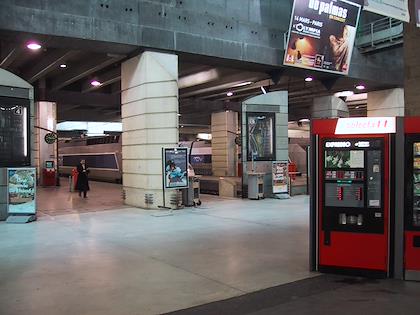 | | 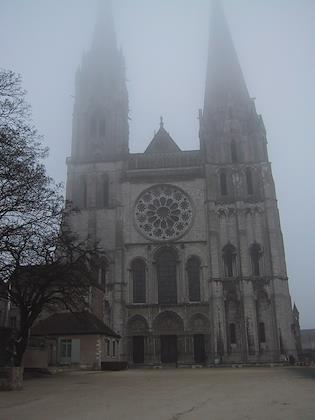 |
| A visit to Chartres by train, a town about 100 kilometres from Paris. Getting a ticket was easy, and the train left only 10 minutes after we arrived. | | This is the cathedral at Chartres, built in the 13th century. It got a little less foggy later in the day. |
| |
|
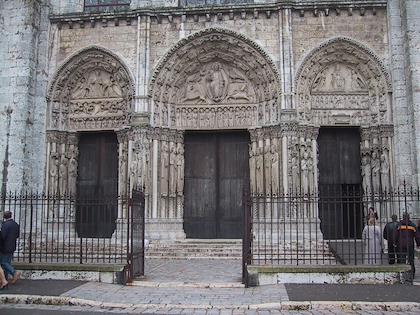 | | 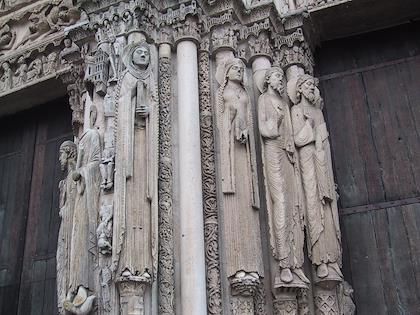 |
| The entrance to the cathedral. It was very uncrowded, probably both because it's the low season and it was quite cold out. | | These figures are typically Romanesque (which is a pre-Gothic style) in that they are very elongated. Contrast them to some of the Gothic figures you'll see in later pictures. This part of the building, along with one of the towers, is the only part left over from the Romanesque cathedral that burned on June 10, 1194 (Eric's birthday!). |
| |
|
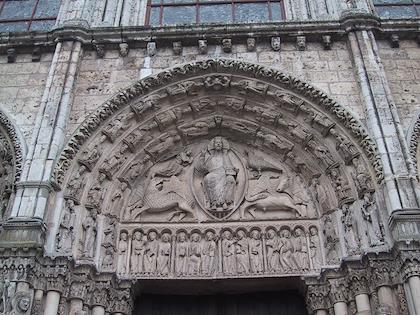 | | 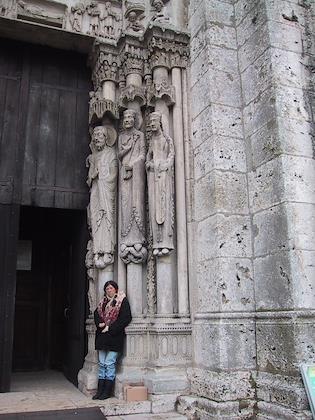 |
| Christ on his throne, surrounded by winged animals. Apparently there are more than 4000 sculptures on the outside of the building. Chartres is France's best preserved medieval cathedral--much of Notre Dame in Paris is renovated, but most of Chartres is original. | | A beggar outside the main entrance. Her face looks like she's been through some hard times. |
| |
|
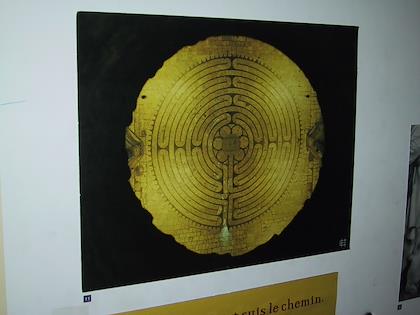 | | 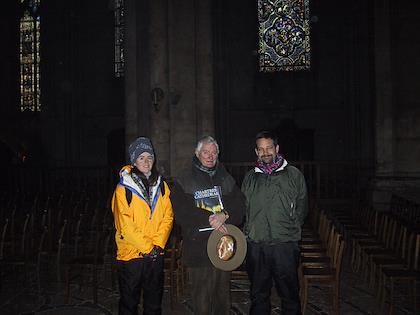 |
| One of the features of the Chartres cathedral I was most eager to see was the maze on the floor. This is what it would look like. Pilgrims used to walk it on their knees as an act of penance. Unfortunately, the maze was covered with chairs. | | Along with 4 other Americans, we took a guided tour from an English man who has written several books on Chartres. Eric thought it was fine, but I thought he was somewhat curt and not open to questions. |
| |
|
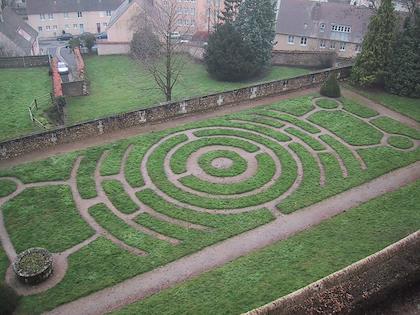 | | 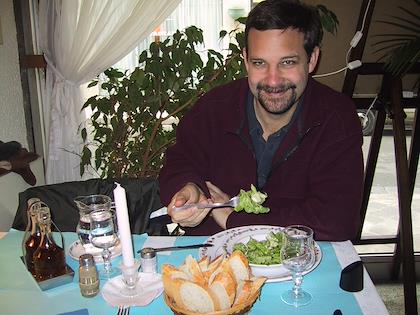 |
| Behind the cathedral is another maze cut into the lawn. | | Before walking around in the old medieval town of Chartres, we had lunch at a nice place very close to the cathedral. Eric had some kind of veal sausage, and I had lamb. |
| |
|
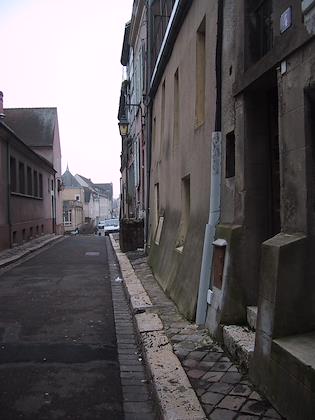 | | 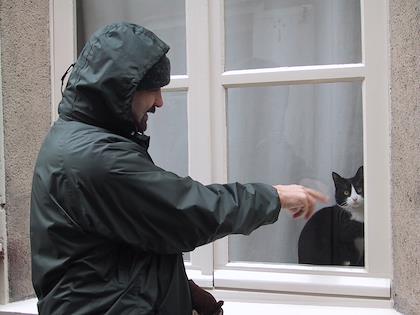 |
| Some of the old buildings get wider at the base. | | Eric found a cat! |
| |
|
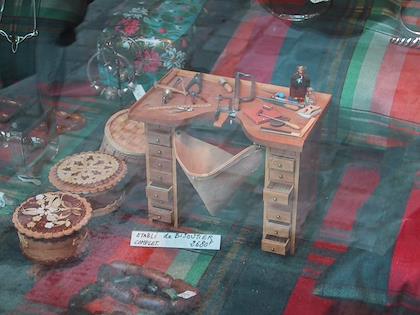 | | 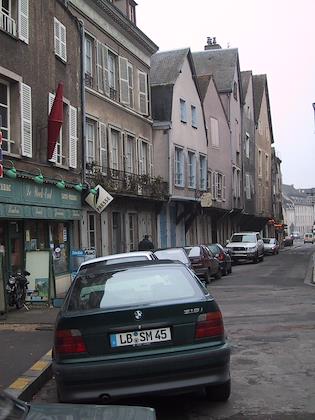 |
| This workbench is that of a bijoutier, or jewelry. If you click on it to see the full image, you can see all the details. | | I loved walking around the old town. It was very romantic and picturesque, with all kinds of interesting architectural details everywhere. |
| |
|
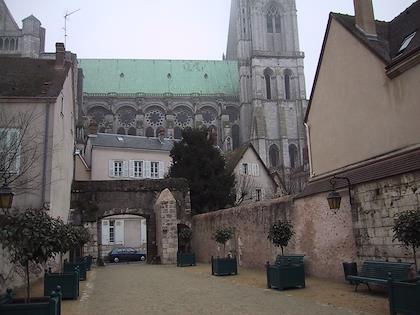 | | 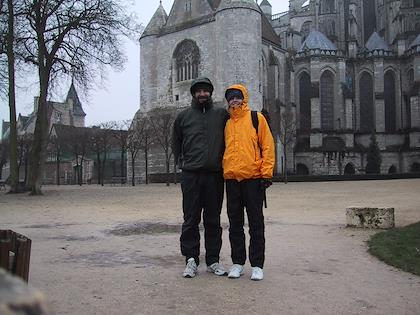 |
| This is from the courtyard of the museum | | Eric and I behind the cathedral. Notice how bundled up we were--it was cold! Good thing we had lots of warm clothes with, including nylon windpants. Not very chic, though. |
| |
|
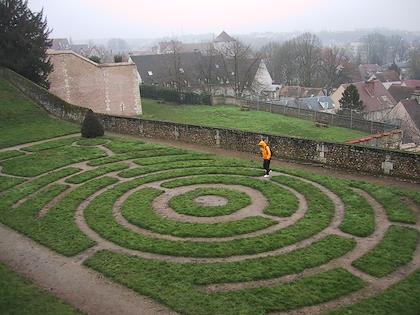 | | 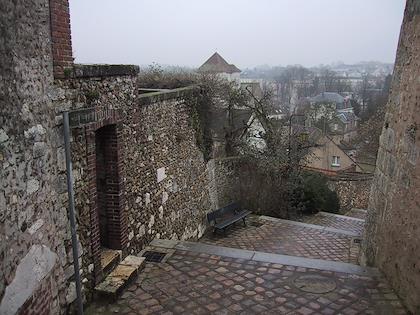 |
| Me on the maze | | Walking down from the cathedral to the old town. |
| |
|
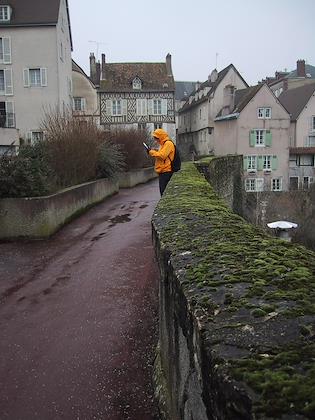 | | 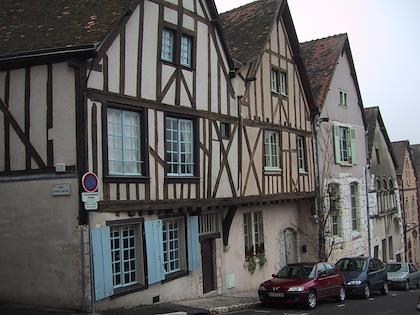 |
| You can see a close up of the half-timbered building below | |
| |
| 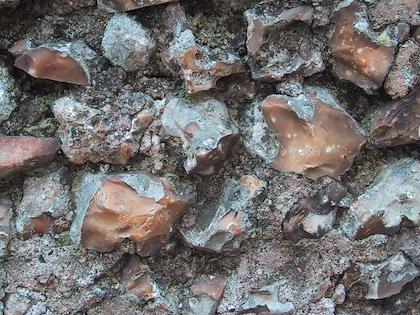 | | 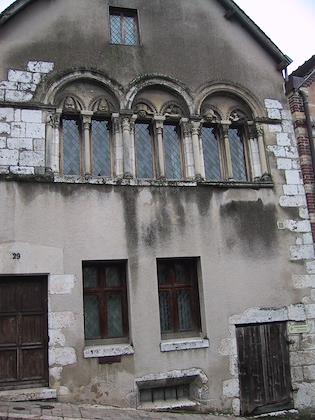 | | Many of the walls were made of this very sharp type of stone. | | The ornamentation on these windows is great--click on the lower picture to see all the details. |
| |
| 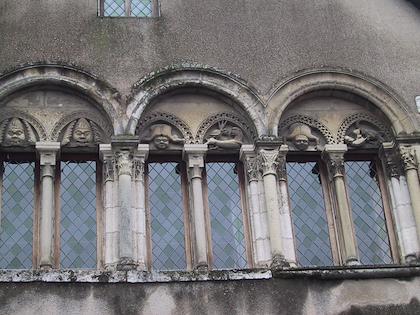 | | 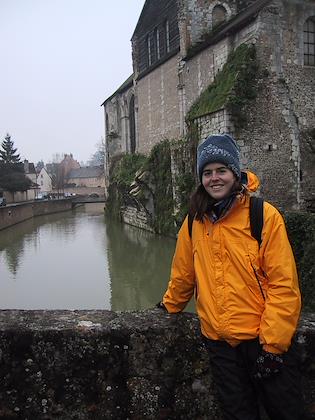 | | | This is the Collegiale Saint Andre, right next to the Eure river. You can see the beginnings of an arch attached to the building. Previously, the building spanned the river. |
| |
| 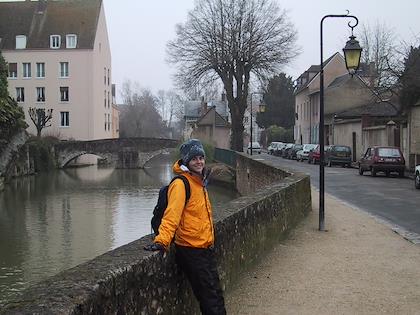 | | 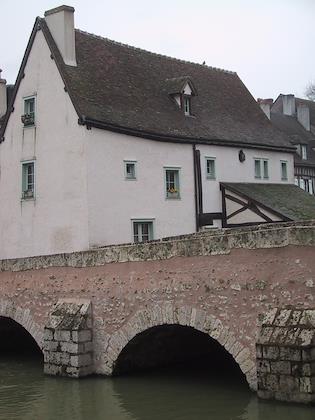 | | The other side of the same bridge. | |
| |
| 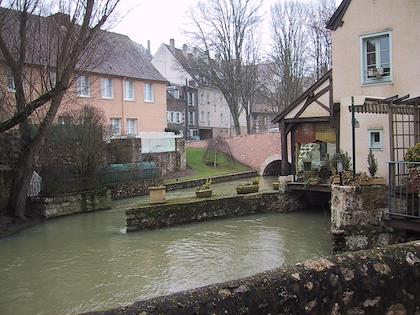 | | 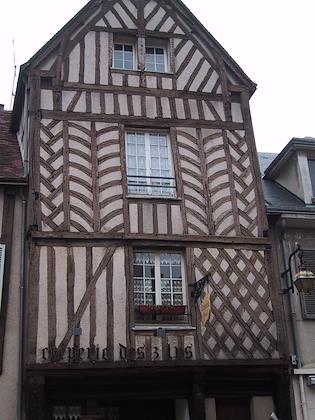 | | There were many walkways that went down to the river. Apparently it was because all the tanneries were there, and they had to wash out the hides in the river. | | This building was a creperie (where they make the pancake-like crepes). Unfortuantely it wasn't open. Next to it was a bakery where be bought some wonderful eclairs, though. |
| |
| 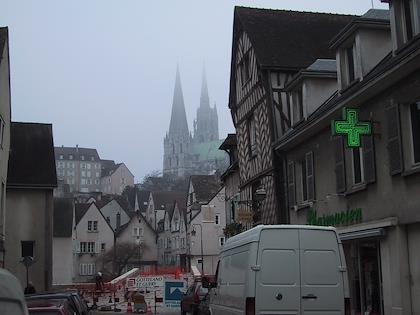 | | 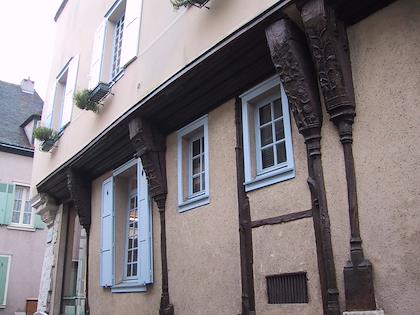 | | From what we were able to tell, it seemed like the green crosses were always pharmacies, and that they were required to have a green cross like that. | | More cool architectural detailing on the old houses. |
| |
| 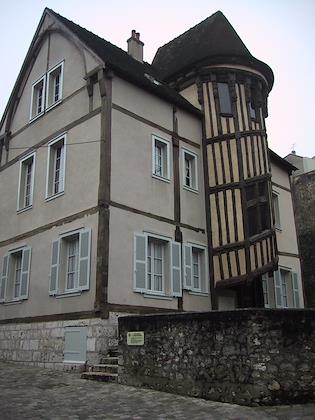 | | 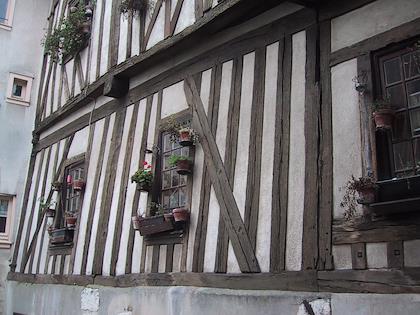 | | |
| |
| 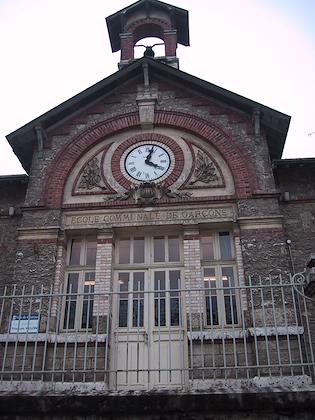 | | 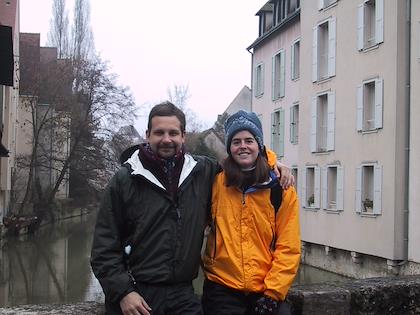 | | | We asked a boy that looked to be about 12 years old to take this picture. Unfortunately he didn't get the bridge behind us, which is what we really wanted to get. |
| |
| 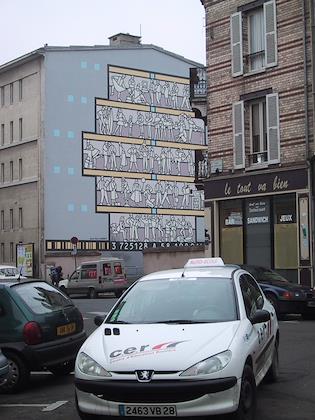 | | 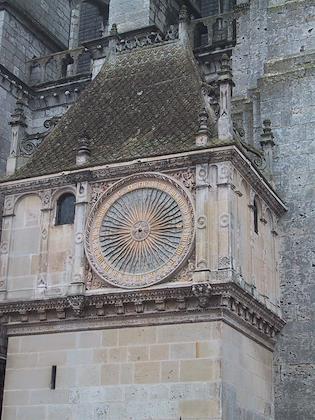 | | A strange modern mural painted on the side of a building. If you click on it to get the full-size image, you can see what looks like bar codes at the bottom. | | Some sundials at the cathedral |
| |
| 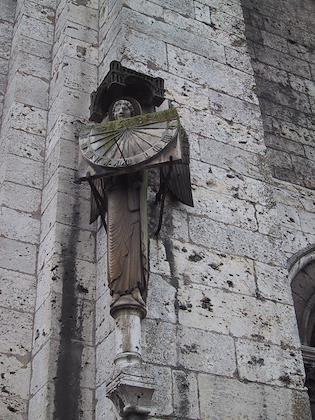 | | 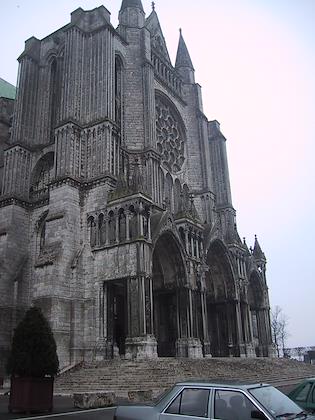 | | | Back at the cathedral to take some pictures. This is the eastern entrance. |
| |
| 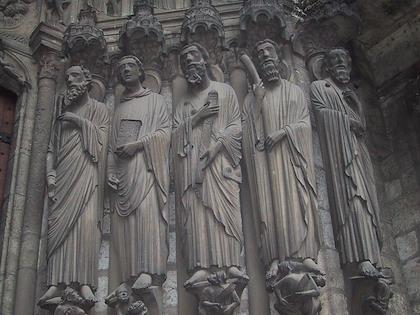 | | 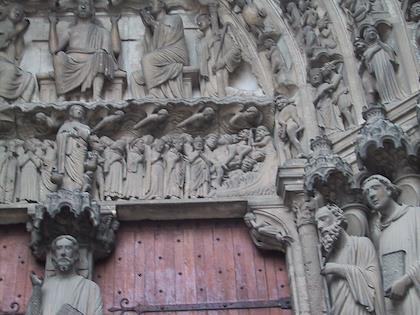 | | Notice these statues are significantly less elongated, compared to the Romanesque ones. These are all saints that were martyred (i.e.killed). Some of them are carrying the instruments of their execution (notice the stick, of a staint that was beaten to death, and the sword, of a saint that was beheaded. | | The dammed, going to hell (an open mouth emitting flames) |
| |
| 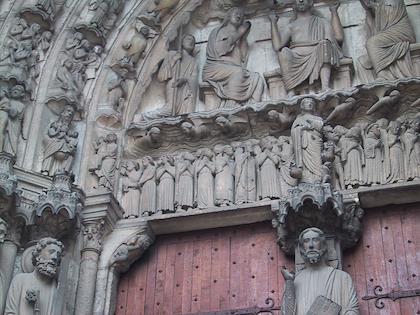 | | 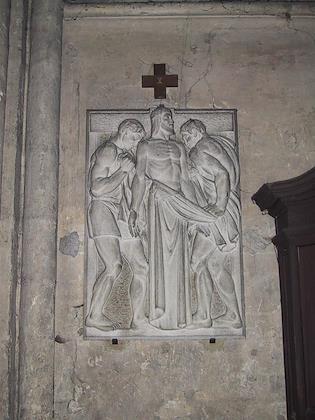 | | The saved, going to heaven. | | Inside the cathedral again. I thought it was a little strange to see this very modern looking wall carving. |
| |
| 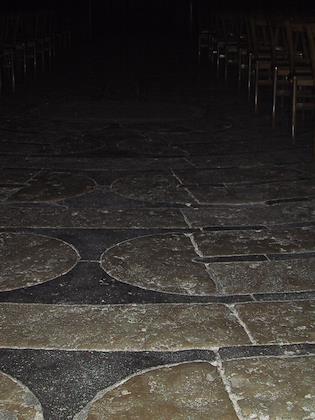 | | 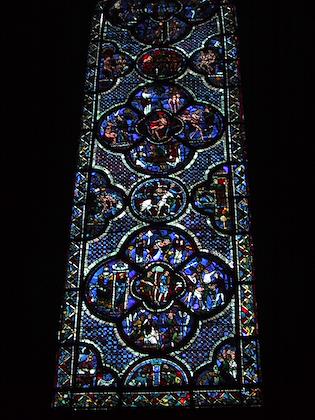 | | This is what the maze looks like. | | This stained glass window tells the story of the good Samaritan. The windows helped to instruct the illiterate (which was almost everybody) in religion back in the middle ages. The Chartres cathedral is very famous for its stained glass windows, almost all of which are from the 13th century. |
| |
| 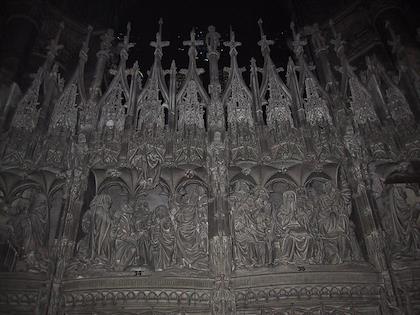 | | 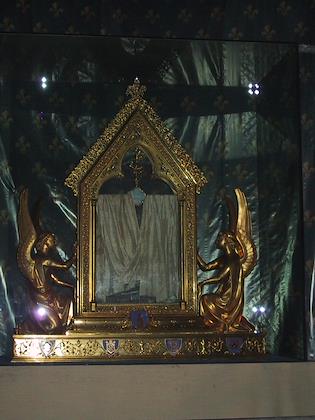 | | The sanctuary area, around the altar, was surrounded by stone carvings. | | The cathedral houses the Sainte Chemise, which is supposed to have been worn by Maria when she gave birth to Jesus. |
| |
| 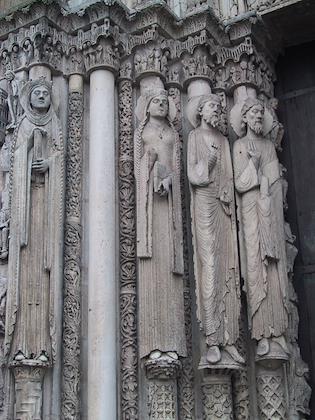 | | 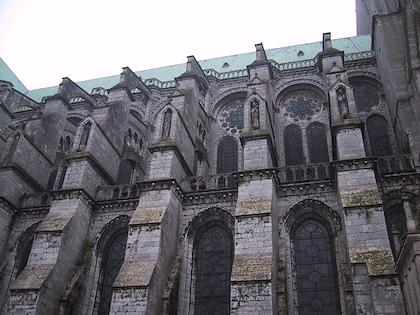 | | Back at the old Romanesque front entrance to the cathedral. Notice the long braids on the women. | | You can see the flying buttresses here, which were used to support the height of the cathedral. |
| |
| 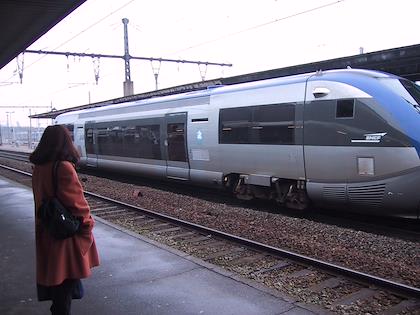 | | 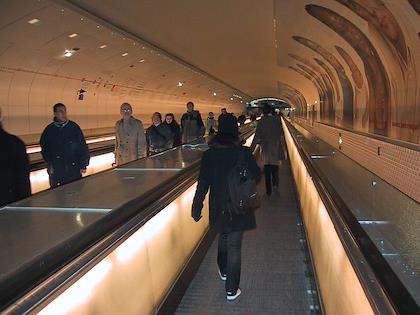 | | Headed back to Paris. We didn't actually ride this super-speedy train--too bad! | | A long automated walkway between the Montparnasse railway station and metro. |
| |
| 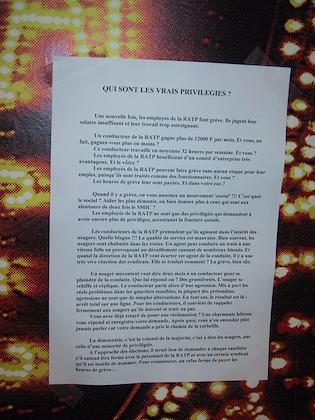 | | 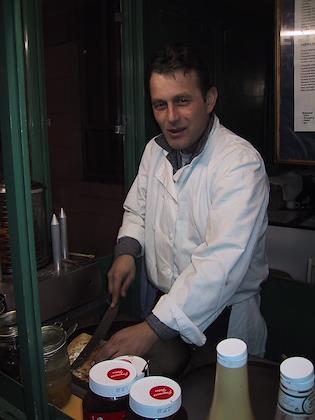 | | Yikes! A metro strike! We'd walked to the train station from the hotel in the morning, about a 35 minute walk, and were going to try to take the metro back, even though there was a strike on. Supposedly 20% of the trains were running, so we figured we would just have to wait a little. But after about 10 minutes of waiting, there was an announcement saying that our metro line wasn't going to get any trains. This is an anti-strike essay taped up on the wall, talking about how the strikers are paid for their strike hours, only work 32 hours a week anyway, etc, etc. | | On the walk home we grabbed a cheese and tomato crepe... |
| |
| 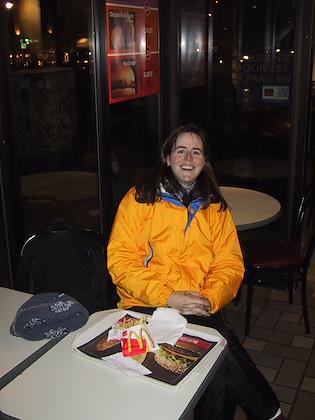 | | 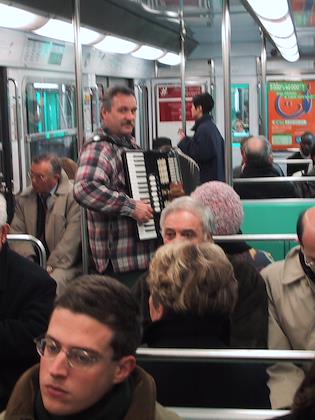 | | ...and also stopped at McDonalds. There were notices up about how many precautions they had taken against mad cow disease. | | Next day, on our way to the Eiffel tower (gotta see it!) we saw this accordion player in the metro. He was one of many. We even saw one 4 piece band. | | | |